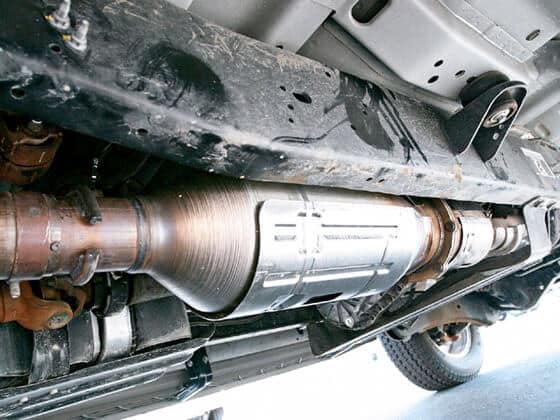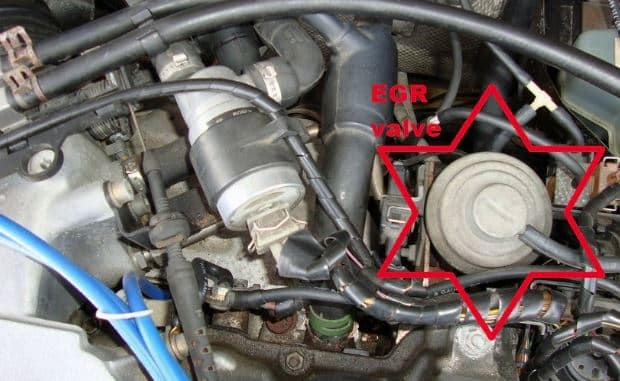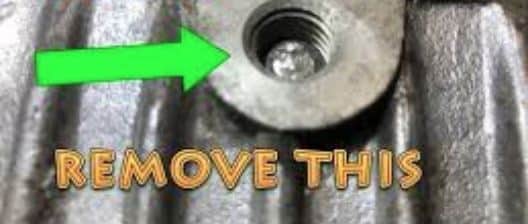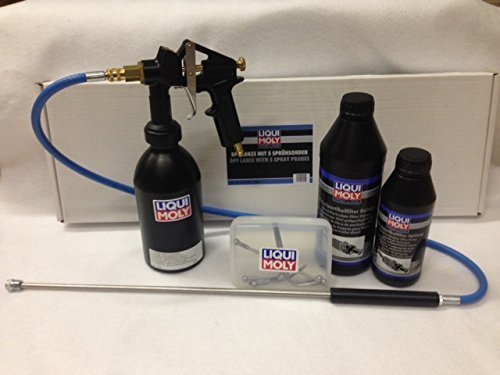
Table of Contents
Background
Diesel particulate filters (DPF) are installed in many modern vehicles to reduce harmful emissions as well as eliminate soot and ash.
However, despite the fact that the vehicle should clean the DPF while you are driving, it is likely that the DPF may build up so much soot and ash over time that you need to have it removed and professionally cleaned.
If you want to clean your DPF filter yourself, the first step is to remove the DPF. Of course, if you are going to do this, you need to be careful. Let’s begin our quick guide on how to clean your DPF:
Removing And Cleaning The DPF Filter
This step by step procedure needs to be done with the utmost care so that nothing gets damaged. Removing and cleaning a dpf filter or how to remove a dpf filter
The way you go abut removing the DPF will depend on the type of vehicle you have.
Below is an explanation of how to remove the DPF filter in a Ford or also Volvo truck:
STEP 1. Remove Engine Cover and Piping and Disconnect Sensors
Start off by removing your engine cover as well as intake piping. You will have to disconnect the EGT, O2 sensor plugs, along with pressure.

Remove engine cover to clean dpf
If you do not know where these are located, these plugs may be found along the firewall. After this, you will need to remove the heat shielding present around the DPF.
The passenger side axle at the front should be removed.
STEP 2. Jack Up The Vehicle
After you have done this, then you will need to jack up your car. Do this carefully. Support your car securely so that it does not move.
STEP 3. Disconnect V-band Clamps
After the car is securely fixed at one place, you should then disconnect the V-band clamps that are present on your exhaust system.

Disconnect vbank clamps to clean dpf
It is essential that you divide the two huge bolts present on your vehicle’s DPF bracket.
STEP 4. Remove The EGR
If you have been able to do all of the above correctly, it will now be possible to remove the handy EGR filter carefully. Remove EGR to clean dpf
STEP 5. Remove Heat Shield Bolts
Your vehicle’s underbody heat shield bolts will now have to be removed. These are those that are around 3 feet long present below your truck.

Remove Heat Shield Bolts
The cross-body brace also needs to be removed. You will notice that this possesses four bolts that connect the left along with right sides. It also goes under your vehicle’s exhaust.
STEP 6. Remove Upper DPF Bolts
Now it is time to remove the vital upper DPF bracket bolts. You should remove the plugs then set aside the wiring as required.
You may need to lower the front subframe to get access. It also may be possible to do this by removing the passenger side axle simply.

Remove Upper DPF Bolts
You need to be careful that the engine along with transmission are adequately supported from above. This is vital so that it does not fall.
You may need to only lower it around 6 inches. Remember that losing the subframe can alter the alignment settings. Therefore, you may have to have a wheel alignment later.
STEP 7. Remove The DPF
At the time that you are snaking your DPF out, you should try and rotate it around 180 degrees to clear your steering rack.
This same case is present when installing it. Invert the DPF moreover move this over your steering rack.

Remove The DPF
This is the way to proceed with diesel particulate filter removal so that you can clean it. The process to remove the DPF filter in a vehicle is somewhat complicated.
If you want you can try it out, but you need to be very careful not to damage anything in the process.
Cleaning The DPF Filter
As mentioned above, if you want to clean the DPF fully then it will be necessary to remove your filter from your vehicle physically.
After this, the mechanical cleaning of the passages needs to occur:

Method 1: DPF Cleaning Additives
One quick and easy fix for a dirty DPF is a DPF cleaning additive. Firstly, you don’t have to remove your DPF to do this.
These DPF cleaners are relatively new to the market but are readily available online or even at your local motor shop.
These DPF cleaning additives are basically chemicals that you add to your fuel tank to aid in DPF cleaning.
Most of these additives contain a “Fuel Borne Catalyst” which works by decreasing the temperature at which soot blocking your DPF will burn off.
An excellent DFP cleaning addtiive choice is the
. Another, is pretty good too and comes it at half the price of Liqui.Method 2: High-Pressure Cleaning Cabinets
One common way to clean a DPF after it has been removed is to use a high pressure cleaning cabinet. Of course, most people wont have a high-pressure cabinet lying around, so this method is mostly used by mechanics.
High-pressure DPF cleaning cabinets work by backflushing compressed air into the filter which causes the fine ash to dislodge.
You need to take safety precautions while doing this. Below is the procedure:
-
i. Weigh The DPF: Weigh The DPF to get the ‘pre cleaning weight’.
-
ii. Apply High Pressure To The DPF:
The DPF filter is carefully placed into the blast cabinet and the cabinet is then tightly sealed.
The device is then turned on and therefore will begin forcing air into each cell of the DPF at high pressure, while suction is applied at the bottom of the DPF.
Some pressure cleaning cabinets have a bottom-mounted camera that allows you to see the amount of soot being removed from each cell.
This means that you can see exactly when all the ash has been removed and the DPF is done cleaning.
-
iii. Bake The DPF: After the DPF is pressurized, it needs to be cleaned. At this point, you place the DPF into a programmed kiln to slowly heat up to an operating temperature of over 600 degrees. The DPF is then baked for twelve hours and then cooled down slowly.
-
iv. Remove Remaining Soot: After baking the DPF, you place the DPF back into the pressure cabinet and the air blast is used to remove any remaining soot that was not dislodged from the first attempt.
At this point, you should monitor the camera to ensure all the soot is being removed. When all the cells are unblocked, you can remove the DPF and the DPF cleaning process is complete.
-
v. Checking OEM Bench Standards: After the DPF is cleaned, you should place it on a flow meter to ensure the DPF filter meets the OEM benchmark standards given by the manufacturer.
This is very important as far as regulations are concerned. In addition, you should weigh the DPF and subtract the new weight from the previous weight to get and idea as to how much soot was removed.
Method 3: Local DPF Cleaning Specialist
If you don’t have any experience with DPFs like most people, then you may want an expert to handle the DPF cleaning for you.
If you live in the United States, there will more than likely be a DPF cleaner in your local area. However, we should warn you - it probably won’t be cheap.
How do you find a DPF specialist in your area? We found two handy tools that you can use to find a local DPF specialist: Find a DPF Specialist.
Method 4: Regeneration
DPF regeneration is the process by which soot is removed from the filter while driving or you can even force it while parked.
You cant use this method when the DPF is removed. This process can occur in a number of ways known as active, passive and parked regeneration.
For example, active regeneration can be achieved by driving at speeds of over 40mph for 10 minutes using at least 2500 RPM and sticking in 3rd/4th gear. However, your choice of active, passive or forced regeneration will depend on the condition of your vehicle.
For example, vehicles used regularly for around-town driving rarely achieve the conditions required for regeneration, resulting in the filter becoming blocked. In such cases, active regeneration is normally recommended.
How do these filters work? Well DPF cleaning additives contain cerine additives. These additives bond to the soot particles and by doing so reduces the temperature at which they combust.
This ten enables the DPF to passively regenerate while you drive around town. Click here to learn more about passive regeneration.
Method 5: Cut It Open
One can cut open the assembly to clean it themselves but this also needs great skills which we wont attempt to describe here.
DPF Cleaning Kits
When it comes to DPF cleaning kits, people tend to be a bit skeptical, because they only work sometimes. You may also be wondering if DPF cleaners work.
Most of them work by increasing the temperature of your DPF which should then burns away accumulated soot.
However, because the DPF must be in the engine while this is done, it must be done at a temperature that is more than reasonable.
Because of this, DPF cleaning kits wont work for DPFs which are severely blocked because these need to be heated to very high temperatures to removed all that soot built up over time.
If your DPF is not severely blocked, you can use a DPF cleaner like this:
So due to the very high temperatures gained in DPF cleaning kit usage, it can work sometimes and provide the DPF more life, but sometimes it cannot clean the blockage if too much soot is present.
Alternatives To DPF Cleaning
It is very tough to clean the DPF by yourself unless you are an expert at this. An alternative is that you can buy a rebuilt DPF.
Precautions For DPF Cleaning
For those who are cleaning the DPF themselves, you should wear a respirator. You want to avoid breathing in the fine ash coming from engine’s combustion.
Why Is Timely and Proper DPF Cleaning Important?
Firstly, remember that a Diesel particulate filter or DPF works by trapping soot from your vehicle’s exhaust along with ash from its motor oil.
Much of the sediment gets burned off during a vehicle’s operation, but sometimes ash remains inside the filter’s honeycomb substrate and can only be removed by periodic servicing by removing and cleaning the DPF.
The DPF present on your vehicle catches particulates as well as burns soot turning them into a type of fine gray ash while undergoing self-cleaning “regen” kind of cycles.
As time passes, the fine ash gathers and gets the filter full. Therefore it then needs to be cleaned or also replaced.

Dpf filter cleaning
Exhaust present in highway trucks tends to be often hot enough to burn off much soot during the process known as “passive regeneration”.
Nevertheless, those that experience stop-and-go operations and which idle much are not able to make their exhaust get hot enough and so a lot of soot build up on the filter.
The ideal case is that the latter should “actively” burn out soot specifically from the substrate. It is performed by injecting more fuel precisely upstream of the oxygen catalyst. It can also be done by when parked. In this case, the vehicle plugs in an electric heater.
The active removal of soot via on-board regeneration may happen one or more times daily. This depends on the kind of operation that the vehicle undergoes.
This usually is not noticed by the driver until an indicator light can be seen on in the instrument panel. Nevertheless, the warning can get more prominent via the light indicators. In such cases, the driver should then stop and start an active regeneration.
In addition, the ash coming from motor oil remains in the filter’s substrate. This should often be blown or also washed out.
To do this, the DPF should be removed from the vehicle. It is then put in a pressure cabinet as described above. After this, the device sends compressed air through the substrate and clears the filter.
Conclusion
So you’ve learned how to remove and clean your DPF. DPF cleaning is very important especially for that have severely blocked DPFs.
While the vehicle normally cleans the DPF itself, sometimes it is important to remove the DPF and clean it manually.
Before you go and remove your DPF however, consider the other methods to clean your DPF mentioned above. Maybe you will discover don’t need to remove it at all.
 by
by 
